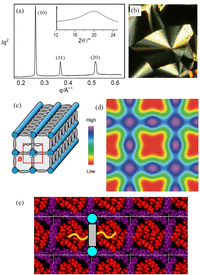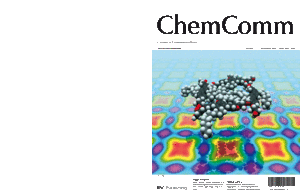Honeycomb Liquid Crystals discovered
The groups of Carsten Tschierske (Halle) and Goran Ungar (Sheffield) have generated liquid crystalline (LC) phases build up of honeycomb arrays of polygonal cylinders having single-molecule walls. To build up these structures they have synthesized three series of compunds containing four flexible chains, attached to a rigid core of bolaaamphiphiles. The chains structure were changed, from being identical alkyl chains, to different alkyl chains and also to semiperfluorinated. This allowed to change the LC phases from monotropic (metastable) for molecules with very short alkyl chains to cylinder and hexagonal columnar phase for molecules having semiperfluorinated chains.
This is the first example reported in litteratire of molecules capable of forming LC phases built up by single molecule wall polygonal honeycomb lattices.
To find out more about their research you can visit the Chem. Comm. 2008.
This research was done in the frame of the SONS Project SCALES.

(a) X-ray diffraction pattern at 50 o cooling; (b) texture as seen between crossed polarizers (65 o C, the dark areas are homeotropically aligned regions); (c) model showing the organization of the molecules in the Colsqu/p4mm density map, reconstructed from the diffraction pattern (a); (e) snapshot of a molecular dynamics simulation of the structure viewed down the column axis.
Liquid Crystals: columnar, smetic or both?
A recent discovery, brought about by the collaboration between the groups at the University of Halle (Chemistry) and the University of Sheffield (Engineering Materials), was that of a phase which for the first time combines the features of columnar liquid crystal (2-d packing of cylinders) and smectic liquid crystal (1-d stacking of layers). The 3-d electron density map, reconstructed from synchrotron X-ray data, is shown in the figure together with three superimposed schematic molecules. The T-shaped molecules have an aromatic rod-like core, a paraffinic tail at each end, and a polar ethyleneoxide chain attached to the side of the aromatic rod. Due to the polar channels, this “hexagonal channelled layer” phase offers an opportunity to create chemically-responsive ionically conducting nanowire arrays for application in smart redox devices.
The groups of Prof. Goran Ungar and Carsten Tschierske belong to the SONS Project SCALES (Complexity across lengthscales in soft matter).

Reconstructed electron density map of the channelled layer liquid crystal phase: the blue isoelectron surfaces enclose the polar channel-like domains (high electron density) and the pink surface encloses the low-density aliphatic regions. The layers in between are composed of aromatic rod-like units. B Chen, XB Zeng, U Baumeister, S Diele, G Ungar and C Tschierske, "Liquid Crystals with Novel Complex 3D Superstructures" Angew. Chem. Int. Ed. 2004 43 4621 –4625.


